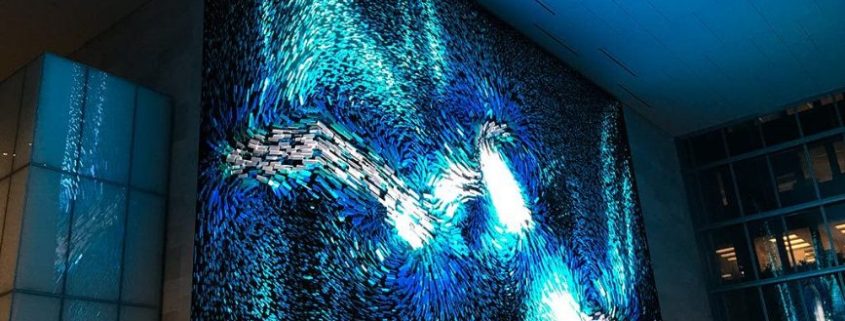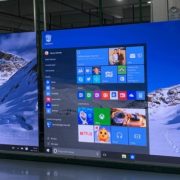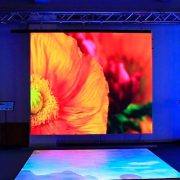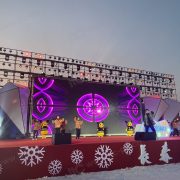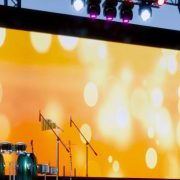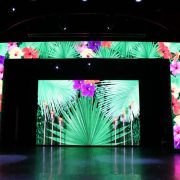Stage LED Screen Price: Key Considerations for Event Planners
The advent of LED technology has revolutionized stage performances, elevating them to new heights with its vibrant display capabilities. The transformative impact of LED screens on stage cannot be overstated; they have become an essential element for any event seeking to captivate and engage its audience. From concerts to corporate gatherings, the use of stage LED screens brings a level of versatility and visual appeal that was previously unattainable. However, when considering the integration of this technology into an event, the stage LED screen price becomes a pivotal factor. The cost of these screens varies widely, influenced by factors such as size, resolution, and custom features, making it crucial for event planners to assess the stage LED screen price in the context of their specific needs and budget constraints.
Stage LED Screen Cost
The evolution of stage performances and events has been significantly influenced by technological advancements, with LED screens playing a pivotal role in this transformation. These screens not only elevate the visual experience but also serve as dynamic canvases that bring creative visions to life. Understanding the stage LED screen price is crucial for event planners, stage designers, and production teams who aim to incorporate these visual marvels into their setups. The cost of stage LED screens is influenced by a multitude of factors, ranging from the physical attributes of the screens to the underlying technology that drives them. This exploration aims to shed light on these factors, revealing how they collectively determine the investment required to leverage LED technology for stage purposes.
Size and Resolution: The Visual Spectacle’s Foundation
The size of an LED screen is perhaps the most visually impactful factor and a significant cost determinant. Larger screens offer a more immersive experience, capable of captivating audiences and conveying the grandeur of a performance. However, the price escalates accordingly, as larger screens require more LEDs, more materials for the frame, and potentially more complex support structures.
Resolution, measured in pixels, defines the clarity and detail of the images displayed. High-resolution screens, while offering stunning visuals, come at a higher cost due to the greater number of LEDs per square inch. This denseness not only increases the price of the LEDs themselves but also the complexity of the control systems required to manage them. Thus, a balance between size and resolution is often sought, tailored to the specific needs of the event and the viewing distance of the audience.
Technology and Features: The Engine Behind the Visuals
The technology underpinning LED screens further influences the stage LED screen price. Conventional LED screens, suitable for basic display purposes, are generally more affordable. However, advancements such as high refresh rates, wide color gamuts, and improved contrast ratios come with a premium. These features enhance the viewing experience, ensuring that even the most rapid movements are displayed smoothly, colors are vivid, and blacks are deep and true.
Additionally, the advent of flexible and transparent LED screens has opened new avenues for stage design, allowing for screens that can curve around structures or blend seamlessly into the background. Such innovative features, while offering unparalleled creative freedom, also reflect in the cost, necessitating a higher budget.
Durability and Maintenance: Long-term Considerations
The build quality and durability of LED screens are crucial for stage applications, where they may be subject to frequent transportation and varying environmental conditions. Screens designed to withstand these demands are inherently more expensive, incorporating robust materials and protective features. However, this initial investment can lead to lower maintenance costs and a longer lifespan, ultimately offering better value over time.
Maintenance is an ongoing cost factor that can affect the total cost of ownership of an LED screen. High-quality screens with accessible modular components make repairs and updates easier and less costly, whereas cheaper models may require more frequent replacements and potentially more downtime.
The Value Brought to Productions
Despite these costs, the value that LED screens bring to stage productions cannot be overstated. They transform venues, create immersive environments, and significantly enhance viewer engagement. The flexibility of content, from static backgrounds to interactive displays, allows for creative storytelling that can adapt in real-time to the dynamics of the performance.
Moreover, the use of LED screens can often reduce the need for traditional set pieces, lowering production costs and simplifying logistics. This versatility makes LED screens a cost-effective solution in the broader context of event production, where the visual impact and audience experience are paramount.
The stage led screen price is influenced by a complex interplay of factors, including size, resolution, technology, durability, and the innovative features that these screens can offer. While the upfront cost may be significant, the value they add to productions in terms of visual impact and versatility is invaluable. Event planners and production teams are thus encouraged to consider not just the immediate cost but also the long-term benefits and savings that high-quality LED screens can provide. This strategic approach ensures that the investment in LED technology pays dividends in the form of unforgettable audience experiences and standout events.
Stage LED Screen Price: LED Screens for Stage Rental and Their Impact on Price
In the dynamic world of live events, from spellbinding concerts to impactful corporate presentations, the visual element plays a crucial role in engaging the audience. This is where LED screens come into play, especially for stage setups. They provide vivid imagery, dynamic content display, and enhance the overall event atmosphere. However, the acquisition of such cutting-edge technology brings forward the question of cost. Here, we delve into the concept of stage LED screen rental, exploring its benefits, the rental process, and how it influences the stage LED screen price.
The Benefits of Renting LED Screens for Stage Events
Renting LED screens for stage use presents a multitude of advantages, particularly for events that are one-off, annual, or require a high degree of flexibility in their visual displays. Here are some key benefits:
- Cost-Efficiency: The most immediate benefit of renting an LED screen is the cost advantage. Purchasing a large, high-quality LED screen outright can be prohibitively expensive, especially for single events. Rental allows access to the latest technology without the hefty initial investment, significantly impacting the stage LED screen price in a positive way.
- Flexibility: Event sizes and themes can vary greatly. Renting allows organizers to choose screens that best fit the specific needs of each event, be it size, shape, or configuration. This adaptability ensures that the visual components are always perfectly tailored to enhance the event’s theme or branding.
- Access to Latest Technology: The technology behind LED screens is constantly evolving, with newer models offering better resolution, higher brightness, and more energy efficiency. Rental providers typically update their inventory with the latest technology, allowing event organizers to utilize the most advanced screens available, ensuring a top-tier visual experience.
- Professional Support and Installation: When renting an LED screen, providers usually offer a full service that includes delivery, setup, and technical support. This ensures that the screens are professionally installed and function flawlessly during the event, reducing the burden on event organizers and mitigating technical risks.
- Customization and Creativity: Rental LED screens offer the opportunity to get creative with stage design. With various options for screen sizes, shapes, and configurations, organizers can experiment with innovative designs that would be impractical or too expensive to consider if purchasing screens outright.
Navigating the Rental Process: Choosing the Right Provider
The benefits of renting LED screens for stages are clear, but how does one navigate the rental process, especially with an eye on controlling the stage LED screen price? Here are some considerations for choosing the right rental provider:
- Inventory Quality and Variety: Ensure the provider has a wide range of high-quality LED screens. The availability of various models and configurations is crucial for finding the perfect match for your event.
- Expertise and Support: Look for providers with a strong track record of supporting similar events. Experienced technicians and support staff are invaluable, especially when unexpected issues arise.
- Cost Transparency: Understand the full scope of costs involved. A reputable provider should offer clear pricing, including delivery, setup, operation, and dismantling fees. This transparency is key to managing the overall stage LED screen price effectively.
- References and Reviews: Check the provider’s references and reviews from previous clients. Positive feedback from similar events can give you confidence in their reliability and quality of service.
- Customization and Flexibility: The provider should be willing to work closely with you to tailor their services to your event’s specific needs. This includes screen configuration, setup timing, and any special requests you might have.
- Insurance and Safety: Ensure the provider has comprehensive insurance and adheres to safety standards. The safety of your event attendees and the protection of your investment should never be compromised.
Renting LED screens for stage events is a strategic decision that balances cost efficiency with access to high-quality, flexible visual solutions. By carefully selecting a rental provider and considering the factors that influence the stage LED screen price, event organizers can create memorable, visually stunning events that captivate their audiences. The process of renting, while seeming daunting at first, opens up a world of creative possibilities, making it an ideal choice for those seeking impactful, flexible backdrop solutions without the commitment and expense of purchasing.
Stage LED Screen Sizes and Formats: A Comprehensive Guide
When it comes to selecting the appropriate LED screen for a stage, several factors come into play, notably the size and format of the screen. These elements are dictated by the dimensions of the stage and the nature of the event, which in turn significantly influence the stage LED screen price. The decision-making process is a delicate balancing act, seeking to optimize visual impact while staying within budgetary constraints.
Tailoring Size to Stage Dimensions
The size of an LED screen is a fundamental consideration that directly affects its cost. Larger screens offer more visual real estate, providing a grander and more immersive experience. However, the price increases with size, not just because of the additional LEDs required but also due to the increased structural support, installation complexity, and transportation logistics.
Choosing the right size involves a detailed analysis of the stage dimensions. For expansive stages found in concerts or large-scale events, bigger screens are necessary to fill the space adequately and ensure that the visuals are a central part of the audience’s experience. Conversely, for smaller venues or intimate settings, a more modestly sized screen can provide a focal point without overwhelming the stage or the audience.
The type of event plays a crucial role in this decision. A corporate event might benefit from a medium-sized screen that complements a speaker’s presentation, whereas a music concert might require a vast, wide screen that spans the length of the stage to add dynamism to the performance.
Format and Aspect Ratio: Enhancing Visual Storytelling
The format and aspect ratio of an LED screen are also key considerations that impact the stage LED screen price. Traditional formats, such as 16:9 or 4:3, are common and might suffice for general purposes. However, custom formats can dramatically enhance a performance. For example, an ultra-wide screen with an aspect ratio of 32:9 can create an enveloping visual experience, wrapping the audience in the performance. Custom shapes and curved screens can further add to the immersive experience, though they require more sophisticated technology and thus come at a higher cost.
Custom formats allow creative teams to push the boundaries of visual storytelling. They can design content specifically for these unique dimensions, creating visuals that flow seamlessly with the performance and elevate the audience’s engagement. This customization, while increasing the stage LED screen price, offers unparalleled opportunities to make each event unique.
Ensuring Visibility for All Audience Members
An often-overlooked aspect of LED screen selection is the importance of ensuring that all audience members have a clear view. The size and placement of the screen must consider sightlines from all seating areas. A screen that is too small or improperly positioned might leave parts of the audience unable to fully enjoy the visual elements of the event.
To this end, event planners might opt for multiple screens or a combination of main and auxiliary screens. This approach ensures that visuals are accessible to all, regardless of their location in the venue. While this strategy increases the stage LED screen price, it is crucial for maintaining the inclusive and immersive nature of the event.
The stage LED screen price is not just a figure on a budget sheet; it represents a key investment in the quality and impact of stage productions. The selection of LED screen sizes and formats is a critical process that requires a deep understanding of the event’s goals, the venue’s characteristics, and the audience’s needs. By carefully considering these factors, event organizers and production teams can ensure that their investment in LED technology pays off, creating unforgettable experiences that resonate with every attendee.
Buying LED Stage Screens for Permanent Installations: Analyzing the Stage LED Screen Price
When it comes to enhancing the visual experience of any event, LED screens have become the go-to technology for their dynamic and vibrant display capabilities. For venues hosting regular events or looking to make a lasting investment in their stage setup, purchasing LED stage screens for permanent installations emerges as a strategic decision. This move not only elevates the aesthetic appeal of performances but also promises long-term benefits and cost-effectiveness. However, understanding the stage LED screen price in the context of purchasing versus renting is crucial for making an informed decision.
Considerations for Purchasing LED Stage Screens
When opting to buy LED screens for permanent or long-term use, several key considerations come into play. These factors will significantly influence the stage LED screen price, ensuring that the investment aligns with the venue’s needs and budget.
- Initial Investment vs. Long-Term Savings: The upfront cost of purchasing LED screens can be substantial. However, for venues with a high frequency of events, the long-term savings can outweigh the initial expense. No recurring rental fees and the ability to use the screen at will can result in considerable savings over time.
- Screen Quality and Technology: Investing in high-quality screens with advanced technology is paramount. Features such as high resolution, brightness, energy efficiency, and durability should be prioritized. While higher-end models command a premium, they ensure better performance and longevity, affecting the stage LED screen price positively in terms of return on investment.
- Customization and Integration: Permanent installations offer the opportunity to customize and integrate the screen into the stage design seamlessly. This could include unique configurations, shapes, or embedding the screen into set pieces. Customization, however, can add to the cost, so it’s important to balance creative ambitions with budget constraints.
- Maintenance and Upgrades: Ownership entails responsibility for maintenance and future upgrades. Consider the availability of technical support and the cost of potential repairs or updates. A maintenance plan might add to the overall stage LED screen price but ensures the screen remains in top condition.
- Operational Training: Ensuring staff are trained to operate and troubleshoot the LED screen is another consideration. This might involve additional costs for professional training sessions but is crucial for maximizing the screen’s potential and lifespan.
Long-Term Benefits and Cost-Effectiveness
The decision to purchase LED screens for permanent stage installations carries with it a host of long-term benefits that can justify the initial stage LED screen price.
- Enhanced Brand Value: A state-of-the-art LED screen can significantly boost a venue’s brand, attracting higher-profile events and performers. This enhanced reputation can lead to increased bookings and revenue.
- Increased Booking Appeal: Venues equipped with their own high-quality LED screens become more attractive to event organizers, reducing their production costs and logistics. This can lead to a higher rate of event bookings, directly benefiting the venue’s bottom line.
- Customized Experiences: Ownership allows venues to offer more customized visual experiences for each event, potentially increasing satisfaction and repeat business from event organizers and attendees alike.
- Revenue Opportunities: Beyond enhancing events, owned LED screens can be leveraged for additional revenue streams, such as advertising and sponsorship during events.
- Sustainability: From a sustainability perspective, owning a screen reduces the environmental impact associated with frequent transport and setup of rented screens.
While the initial stage LED screen price for purchase can be high, the long-term benefits and cost savings for venues hosting regular events are considerable. The choice to buy should be informed by a thorough analysis of the venue’s event frequency, technical capabilities, and future vision. With the right approach, purchasing LED screens for permanent installations can be a transformative investment, elevating the visual impact of events and securing a competitive edge in the marketplace.
Stage LED Screen Price: Harnessing the Creative Potential of LED Screens in Stage Design
The advent of LED technology has provided stage designers with an unprecedented canvas to craft vivid, dynamic backdrops and enhance thematic elements of a performance. From the subtle nuances of mood lighting to the grandeur of expansive visual landscapes, LED screens offer a palette of possibilities that can be tailored to any narrative or theme. This versatility allows designers to explore creative concepts that were once constrained by the limitations of physical sets and static backdrops.
Dynamic Backdrops: A New Dimension of Storytelling
One of the most striking applications of LED screens is their ability to create dynamic backdrops that evolve in real-time with the narrative. This capability introduces a fluid element to stage design, where visuals can transition seamlessly from one scene to the next, mirroring the pacing and emotional trajectory of the performance. Whether it’s depicting a serene sunset that gradually shifts into the darkness of night or a bustling cityscape that transforms to reflect the passage of time, LED screens enable these visual narratives with stunning realism and precision.
The stage LED screen price factors significantly into this equation, as larger and higher resolution screens offer more detailed and immersive backdrops. However, the investment in such technology is often justified by the dramatic enhancement it brings to the storytelling experience, engaging the audience with visual cues that complement the performance.
Enhancing Thematic Elements: Visual Synergy on Stage
LED screens also play a crucial role in reinforcing the thematic elements of a performance. Through the strategic use of visuals, designers can underscore the underlying themes, amplify the emotional impact of pivotal scenes, and create a cohesive visual motif that runs through the entire performance. For instance, a play exploring themes of nature and renewal might utilize LED screens to project vivid imagery of forests, seasons changing, or waterfalls, enveloping the audience in the play’s atmospheric essence.
Incorporating thematic visuals requires a thoughtful approach to screen design, ensuring that the imagery aligns with the narrative and aesthetic of the production. The stage LED screen price becomes a consideration here as well, as more complex and custom content might necessitate higher resolution screens and, consequently, a larger budget. Nonetheless, the ability to visually amplify the thematic depth of a performance is invaluable, making it a worthwhile investment for productions seeking to leave a lasting impression.
Cohesive Experience: Integrating Screen Design with Stage Elements
Achieving a cohesive experience where LED screen design and physical stage elements harmonize is the pinnacle of stage design. This integration ensures that the LED screens do not overshadow the live elements of the performance but rather complement them, creating a unified visual narrative. It involves meticulous planning, where screen content is designed to blend with set pieces, lighting, and even costume designs, forming a seamless visual continuum.
The coordination between various design teams becomes crucial in this process, necessitating a clear vision and open communication channels. The stage LED screen price impacts this aspect as well, as more ambitious integrations may require custom solutions and advanced technology to realize the designer’s vision. However, when executed effectively, the result is a captivating and immersive experience that transcends the sum of its parts, enveloping the audience in a fully realized world.
Designing with LED screens on stage opens a realm of creative possibilities, from dynamic backdrops and thematic enhancements to the seamless integration of visual elements. While the stage LED screen price is an important consideration, the value these screens add to the overall production—enhancing narrative depth, emotional resonance, and visual immersion—cannot be overstated. In the hands of skilled designers, LED screens become a powerful tool in the art of storytelling, transforming the stage into a canvas where imagination knows no bounds.
The Impact of LED Backdrop Screens on Stage LED Screen Price and Ambiance
In the evolving landscape of live performances and events, the use of LED backdrop screens stands out as a revolutionary technology that has transformed stage presentations. These screens offer a dynamic canvas that can create limitless visual environments, fundamentally changing the ambiance and experience of any event. From concerts and theater productions to corporate events, the versatility and visual impact of LED backdrop screens have become indispensable. However, understanding the relationship between their transformative capabilities and the stage LED screen price is crucial for event planners and venue operators.
Transforming Ambiance with LED Backdrop Screens
LED backdrop screens have the unique ability to transport audiences to entirely different worlds, whether it’s a serene landscape, a bustling cityscape, or abstract visuals that complement the theme of an event. This versatility is invaluable in creating immersive experiences that captivate and engage audiences.
- Limitless Visual Environments: The primary appeal of LED backdrop screens lies in their ability to display high-resolution images and videos, offering an unlimited range of visual environments. This capability allows event designers to craft unique atmospheres that can change with every scene or act, keeping the audience engaged and enhancing the narrative of the performance.
- High Dynamic Range and Color Fidelity: Modern LED screens boast impressive dynamic ranges and color fidelity, ensuring that the visuals displayed are vivid, rich, and lifelike. This level of quality adds depth and realism to the backdrop, further immersing the audience in the visual experience.
- Interactivity and Dynamic Content: Beyond static images, LED backdrop screens can display dynamic content that reacts in real-time to performances or audience input. This interactivity opens up new avenues for creative expression and audience engagement.
Usage Across Different Events
The application of LED backdrop screens spans various types of events, each benefiting from the enhanced ambiance in unique ways:
- Concerts: For musical performances, LED screens serve as a dynamic backdrop that can visually interpret the music, synchronizing with the rhythm and mood of each song to amplify the emotional impact on the audience.
- Theater Productions: In theater, backdrop screens can quickly and seamlessly change settings, from a starlit sky to a dense forest, without the need for physical set changes. This capability allows for smoother transitions and greater creative freedom in storytelling.
- Corporate Events: At corporate gatherings, LED screens can display branded content, animated graphics, and live feeds, creating a professional and engaging environment that aligns with the company’s message.
The Impact on Stage LED Screen Price
While the benefits of LED backdrop screens are clear, their impact on the stage LED screen price is a critical consideration for event organizers. The cost is influenced by several factors, including screen size, resolution, and the complexity of the content to be displayed. High-resolution screens capable of delivering the visual quality required for these transformative experiences typically come at a higher cost.
However, the investment in an LED backdrop screen can be justified by the value it adds to an event. The ability to create unforgettable experiences that engage and mesmerize audiences can lead to higher ticket sales, increased audience satisfaction, and enhanced reputation for event organizers. Furthermore, for venues hosting a wide range of events, the versatility of LED screens offers a cost-effective solution compared to traditional set designs, with the added benefit of reusability across different events.
The introduction of LED backdrop screens has significantly enriched the live event experience, offering endless possibilities for creative expression and audience engagement. While the stage LED screen price remains an important consideration, the long-term benefits and transformative potential of these screens offer a compelling value proposition. Whether it’s elevating a concert, enriching a theater production, or enhancing a corporate event, LED backdrop screens have become an essential tool in the arsenal of event professionals seeking to create memorable and immersive experiences.
FAQs about Stage LED Screen Price
The size of an LED screen stage can vary widely depending on several factors, including the type of event, the size of the venue, the desired impact, and the budget. There isn’t a one-size-fits-all answer, but here’s a general guideline to consider:
Small Events (e.g., conferences, seminars, small concerts): For these types of events, LED screens might range from 6 feet by 10 feet to 10 feet by 20 feet. These sizes are sufficient for enhancing visibility and providing a focal point without overwhelming a smaller venue.
Medium to Large Events (e.g., larger concerts, outdoor events, festivals): For medium to large-scale events, especially where the audience size is significant, LED screens can be much larger, ranging from 20 feet by 40 feet to 40 feet by 60 feet or even larger. Such sizes ensure that visuals are clearly visible to attendees, even from a distance.
Custom and Specialty Events: For events that require unique setups or have specific visual needs (such as immersive experiences, large-scale theater productions, or installations with specific design requirements), LED screens can be custom-made to any size. This can include unusually large screens that cover the entire back of a stage, wraparound screens, or multiple screens arranged throughout the venue for a 360-degree experience.
Key Factors Influencing Size:
Venue Size: Larger venues typically require larger screens to ensure that all attendees have a clear view.
Audience Size: The number of people attending the event influences the size of the screen to ensure good visibility for everyone.
Content: The type of content being displayed (e.g., live video feeds, pre-recorded videos, interactive content) can also dictate the optimal size for clarity and impact.
Budget: Larger, higher resolution screens are more expensive, so budget constraints will play a crucial role in determining the feasible size.
Ultimately, the “ideal” size for an LED screen stage is determined by a combination of these factors, tailored to create the desired visual experience for the specific event or performance.
A stage screen refers to a large display used on or around a stage to enhance the visual experience for the audience during various types of events, such as concerts, theater productions, corporate events, and conferences. These screens can be made from different technologies, with LED (Light Emitting Diode) screens being among the most popular due to their brightness, color accuracy, and flexibility in size and shape.
Key Features of Stage Screens:
Visual Enhancement: Stage screens display videos, graphics, animations, live feeds, and other visual elements that complement the live action on stage. They can add dramatic effects, provide background scenery, display close-ups of performers, or present informational content.
Technology: While LED screens are common, other technologies like LCD panels or projection screens can also be used, depending on the venue and specific requirements of the event. LED screens, in particular, are favored for their ability to produce vibrant colors and high brightness, which are effective even in well-lit environments or outdoor settings.
Modularity and Customization: Many stage screens, especially LED panels, are modular, allowing for customization in size and shape to fit the specific needs of a production. This means they can be configured as large backdrops, wrapped around structures, formed into unique shapes, or even designed to move or change during a performance.
Interactivity: Some stage screens are designed to be interactive, responding to live inputs from performers or the audience. This can include touch interaction, motion sensors, or integration with live social media feeds.
Uses of Stage Screens:
Concerts and Music Festivals: Enhancing live performances with visuals, displaying live shots of the performers, or creating dynamic backdrops.
Theater Productions: Providing changing backdrops, enhancing storytelling with visual effects, or integrating multimedia elements into live performances.
Corporate Events and Conferences: Displaying presentations, keynote speeches, branding elements, or live video feeds to engage and inform attendees.
Sporting Events: Showing live action, replays, close-ups, or interactive content to enhance the spectator experience.
In essence, a stage screen serves as a dynamic and versatile tool for enhancing live events, allowing for creative visual storytelling and audience engagement in a wide range of settings.

